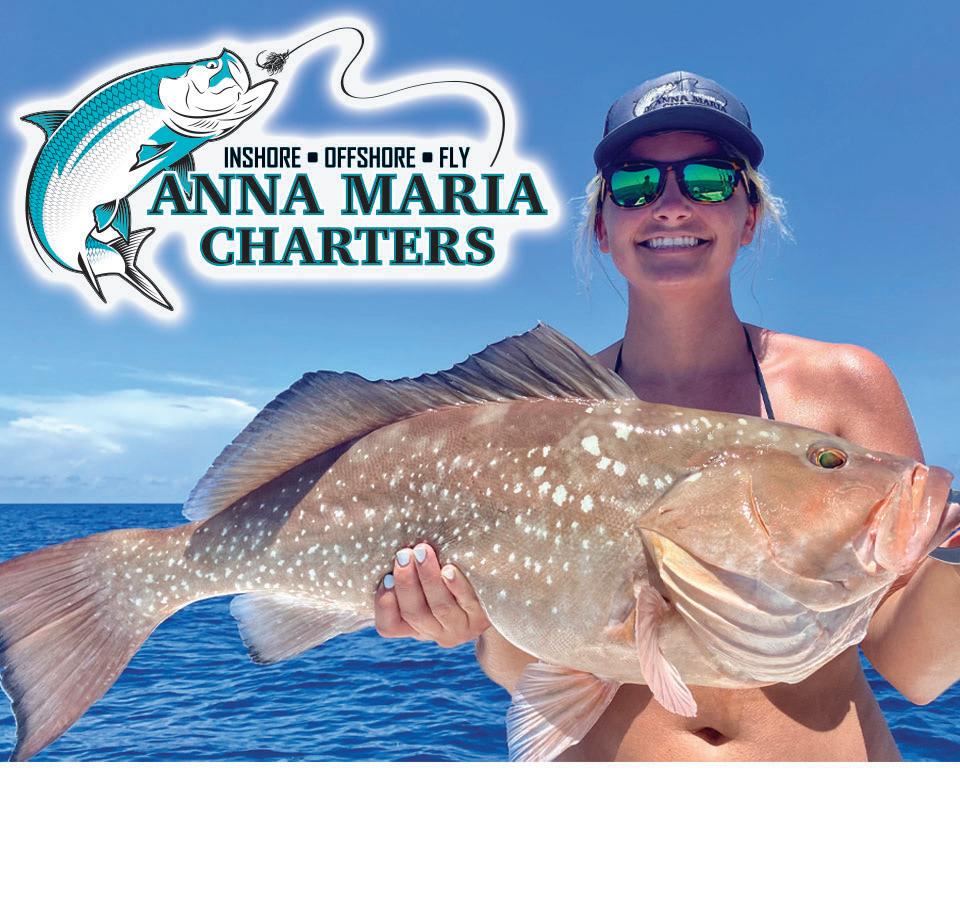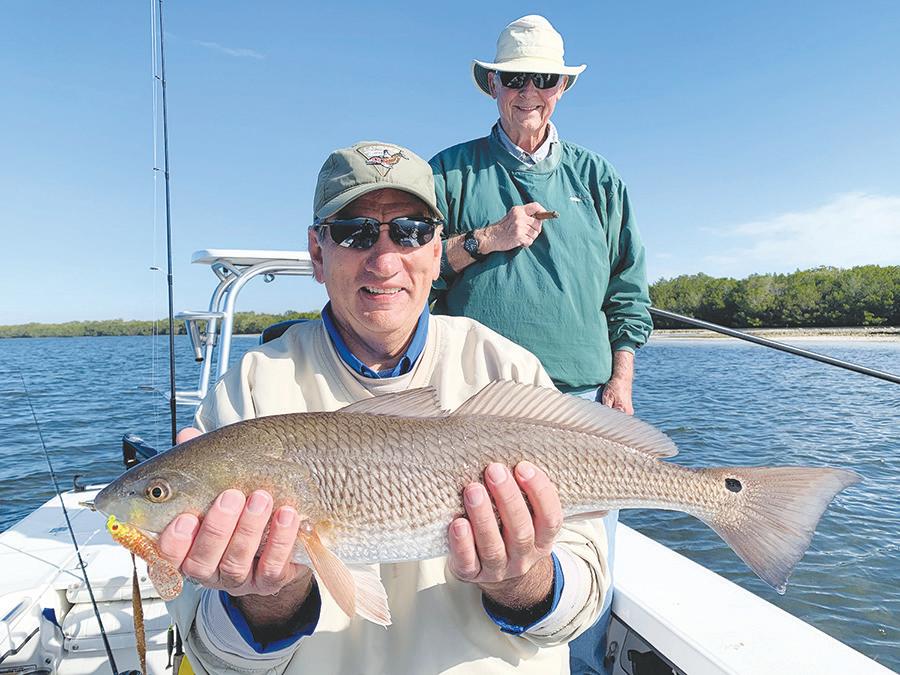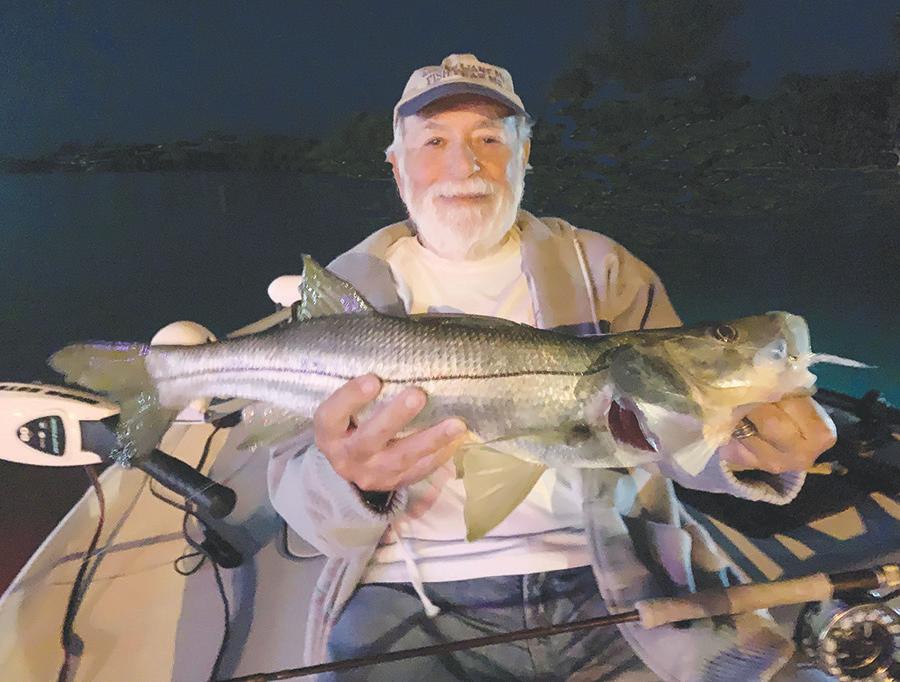
5 minute read
OUTDOORS
20 THE SUN OUTDOORS FEBRUARY 23, 2022
Before you go
Reel Time
RUSTY CHINNIS
Getting on the water can be challenging for the average angler. Life often gets in the way of your favorite pastime and finds you unprepared when opportunity arises. Maybe it’s the “chance” day off or an unexpected invitation that has anglers grabbing their gear, putting it on a boat and heading out. Being prepared before you go and after can guarantee a better chance at success on those special days.
One way to make sure you’re ready when opportunity arises is to create a checklist that you follow before you head out to make the first cast, and one that prepares you for your next outing. With a little due diligence, you can avoid the mistakes that cause you to lose opportunities and fish, mistakes that can be easily avoided.
Here are a few things I include on my checklist, before and after a trip. The hook is one of the smallest but most important components of an effective rig. It’s also one of the easiest things to forget to check. A hook that was razor sharp the last time you used it can become dulled in numerous and unnoticed ways. Contact with the rub rail of the boat, structure in the water, guides and many other objects can cause a hook to lose its edge. Check the hook on your fingernail - if you touch it there and it doesn’t slip, you’ll know it’s sharp enough. It’s always a good idea to have a hook sharpener on hand and touch up the point several times during your outing.
Knots are probably the second leading reason fish are lost. Even the best-tied knot will break if it’s not tightened. You may tie perfect knots but there’s a chance they could loosen between trips. Always make sure you moisten knots before tightening them, and draw them up very tight. The first place that a leader will break is at a knot when it slips.
Checking the drag is, of course, also one of the most important things you can do. Make sure your drag is smooth. I would suggest having the drag set so you don’t have to touch it while fighting a fish. Equally important, loosen the drag when not fishing, which prevents the drag washer from becoming compressed.
Checking leader and line for nicks and abrasion is another must. It’s easier to cut off a small section of leader and re-tie than to lose a good fish to an imperfect line. Fly anglers should always stretch their fly line before making the first presentation of the day. Fly line has memory and will come off the spool in small loops that can tangle easily, causing you to break off a fish. Strip off the line you’ll be casting, make a cast and gently stretch it as you retrieve it. It doesn’t hurt to repeat the process during the day.
Each time you step to the bow, make sure your knots are tight, the drag is properly set, hooks are sharp, leaders are abrasion free and fly line is stretched. It only takes a minute but might just save the day. On the trips when you find willing fish, your preparedness will turn opportunity into memories. While you’ll always lose fish, even when everything is right, you’ll definitely have a better chance if you develop and follow a simple check list.
Finally, consider keeping flies, lures, leaders, nippers and other essentials ready to go in a boat bag. Check the list, grab your rod, reel and pack and enjoy the fruits of preparing before you go. Tight lines!

RUSTY CHINNIS | SUN Having tackle and accessories ready before you go will increase your chances for a successful day on the water.







CAPTAIN RICK GRASSETT | SUBMITTED Keith McClintock (top), from Lake Forest, Ill., and Eric Mueller, (below), also from Illinois, had some action catching and releasing reds on a couple of different trips in Sarasota Bay and Gasparilla Sound with Capt. Rick Grassett recently.
Inshore angling yields good action
CAPTAIN RICK GRASSETT
Anglers fishing with me recently, out of CB’s Saltwater Outfitters on Siesta Key, had good action catching and releasing reds, snook and trout in Gasparilla Sound, reds, trout and pompano in Sarasota Bay and snook and blues in the ICW at night on flies and DOA Lures.
Keith McClintock, from Lake Forest, Ill., fished Sarasota Bay with me and caught and released a couple of nice reds and trout on CAL jigs with shad tails. He also fished backcountry areas of Gasparilla Sound on a couple of other trips with Stephen Liska, from Naples, and Eric Mueller, also from Illinois, and they had some action catching and releasing several reds, trout and snook.
Martin Marlowe, from New York, had a couple of great trips catching and releasing numerous snook and blues on my Grassett Snook Minnow fly while fishing the ICW at night with me recently. Mike Perez, from Sarasota, and Dennis Kinley, from Indiana, also got in on the action catching and releasing numerous snook on flies on another trip. Fly anglers Gary Mintz and Taylor Owen, from Colorado, fished Sarasota Bay with me recently and Taylor caught and released a nice Spanish mackerel on a Clouser fly.
Bill Morrison, from Anna Maria Island, his son, James, and grandson, Patrick, from Maine, fished Sarasota Bay with me and had good action with trout to 17” and a nice pompano on CAL jigs with shad tails and Clouser flies.
Look for reds, snook and larger trout in shallow water. Fishing deep grass flats of Sarasota Bay is a usually a good choice for action with a variety of species including trout, pompano, blues and more. Snook at night around dock lights in the ICW is also a good option depending on conditions. Our natural resources are under constant pressure from red tides fueled by industrial, agricultural and residential runoff, toxic spills and discharges, freezes, increasing fishing pressure and habitat loss and degradation, please limit your kill, don’t kill your limit!

CAPTAIN RICK GRASSETT | SUBMITTED Martin Marlowe, from New York, with a nook caught and released on a fly while fishing the ICW at night with Capt. Rick Grassett recently.



